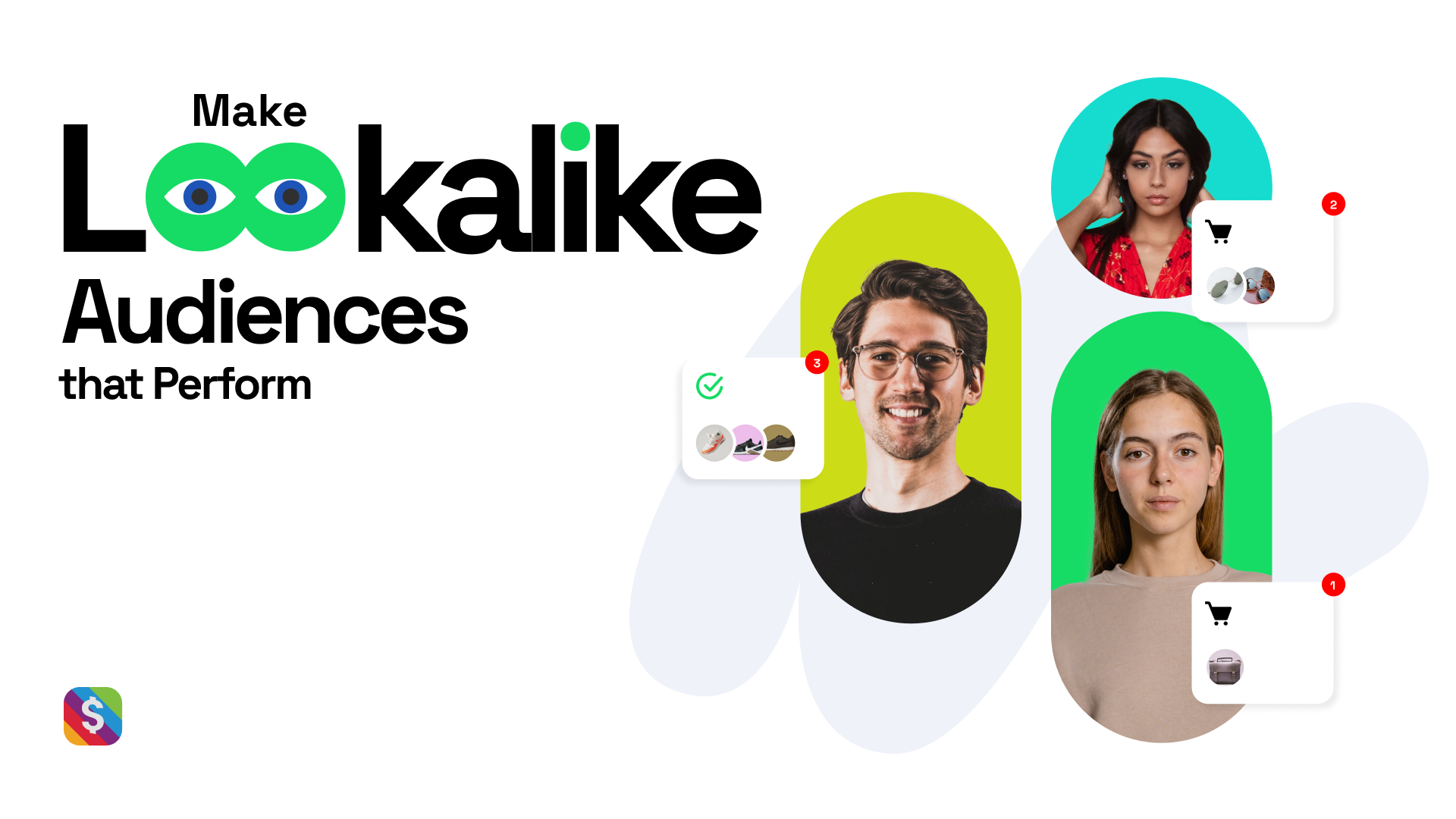How to Fix Your Lookalike Audiences Post iOS14
We’ve discussed why your LAL audiences aren’t working post iOS14. In this post, we’ll discuss how to improve the performance of your LAL audiences.
Let's jump right into it.
What are lookalike audiences?
Your buyer persona is your understanding of who your customers are.
However, you have your best resource — your customers. Real people who have already bought from you.
You have their names, email addresses, details of what products they bought, how often they’ve bought from you, their total spend, etc., in your database with Shopify.
So, how do you use this first-party buyer data to improve your CAC (Customer Acquisition Cost) and target better?
In theory, this is what Lookalike audiences do.
You upload your past buyers to Facebook, Facebook ‘learns’ your buyer persona by profiling your actual buyers, and, finally, finds more people who ‘look like’ your existing customers.

To recap, Facebook makes a ‘data-driven buyer persona’ from your past buyer data and uses that persona to find other people who may buy from you.
This worked beautifully until recently.
BUT.
Yes, you guessed it. Things aren’t as great after iO14.
How did iOS 14 hurt lookalike audiences?
Post iOS14, the two things that get affected are:
- User intent: With iOS14, Facebook’s ability to track buyer intent is greatly reduced. It matters because whereas Facebook can find people who look like your buyers, they won’t purchase if they aren’t in the market for what you are selling. This is the single biggest factor impacting all performance on Facebook, not just LAL audiences.
- Match rate: In the past, if you uploaded 15K past purchasers list, Facebook would match/find anywhere between 11~13K users from its database and use those for profiling. These days, it’s matching anywhere between 4K~5K in most cases.
Is there a way to make lookalikes that perform better?
While there is little you can do about Facebook’s ability to track intent or its match rate, there’s a lever you can use to improve the performance of your lookalike audiences:
Customer Value: Most customer lists are exported from email programs which don’t send the value field along to Facebook. This ‘value field’ indicates how valuable this customer is for your business, relative to your other customers.
Without this, Facebook will make an audience that looks like all your customers — and not your best customers.
So how you do create value-based lookalikes?
Sending a value field while uploading your custom audiences can mitigate some of the damage caused by iOS 14.

See https://www.facebook.com/business/help/917879191754763 for details.
This helps Facebook look for people who are more like your most valuable customers and not your least valued customers.
But what value should you send? And how do you assign values to your customers?
It’s very common to send a customer’s lifetime spend as the value for a customer. But is spend a reliable measure of a customer’s value to your business?
Let’s take the example below. Based on their lifetime spend, Jason is more valuable than Amanda whose value is higher than Bill:

However, let’s look into the transaction details of the same customers:

Once we look at the details, it’s apparent that Jason made one large purchase years ago and never came back. Whereas Bill bought recently, has made multiple purchases and also their overall monetary spend with the brand isn’t low. Clearly, Bill should be more valuable for the business than Jason.
What is RFM analysis? Can it help create better lookalike audiences?
The kind of analysis where we look at:
- How Recently someone bought - to measure of how engaged they currently are with your brand
- How Frequently they buy - this impacts a customer's lifetime value
- How much Money have they spent - their monetary worth to the business
This is called RFM analysis. Using this value instead of the total customer spend is a much better way to tell Facebook about a customer’s relative value to your business.
RFM presents a much more well-rounded picture of who your most valuable customers are TODAY and not 2 years ago.
We know it works because Meta uses RFM-based algorithms to make lookalike audiences from pixel purchasers. See this screenshot of the Meta audience interface.

Scoring your past buyers with RFM
Out of the box, Socioh scores all your past buyers with an RFM score.
This is the score we upload to Facebook when making customer audiences via Facebook.
This score is refreshed daily as new buyers are added to your database and past buyers are re-purchasing, changing their scores.
Plus, with Socioh, you have an added advantage. Your audiences are kept synced with your Shopify store.
This means that every time your store gets another purchase, we automatically refresh your source or seed audience. This in turn forces Facebook to keep your lookalike refreshed.
For customers with a large number of past purchases, there’s another lever you can pull to improve your lookalike's performance.
Want to know more? Read our blog post on audience segmentation for details!
Socioh is a digital advertising platform for eCommerce brands. Our Branded Catalog is the industry leader in dynamic catalog advertising and product feeds.








.png)

















